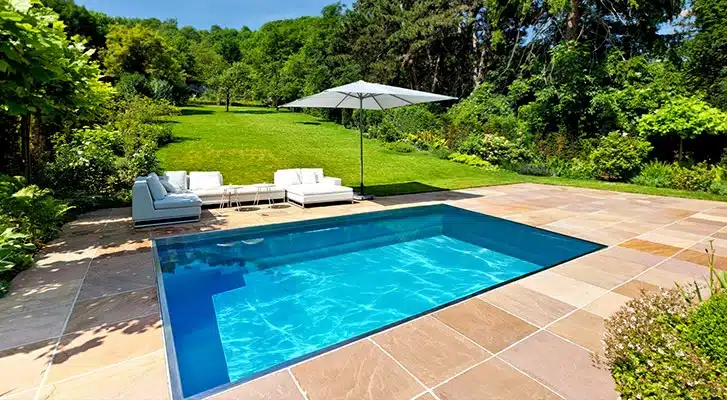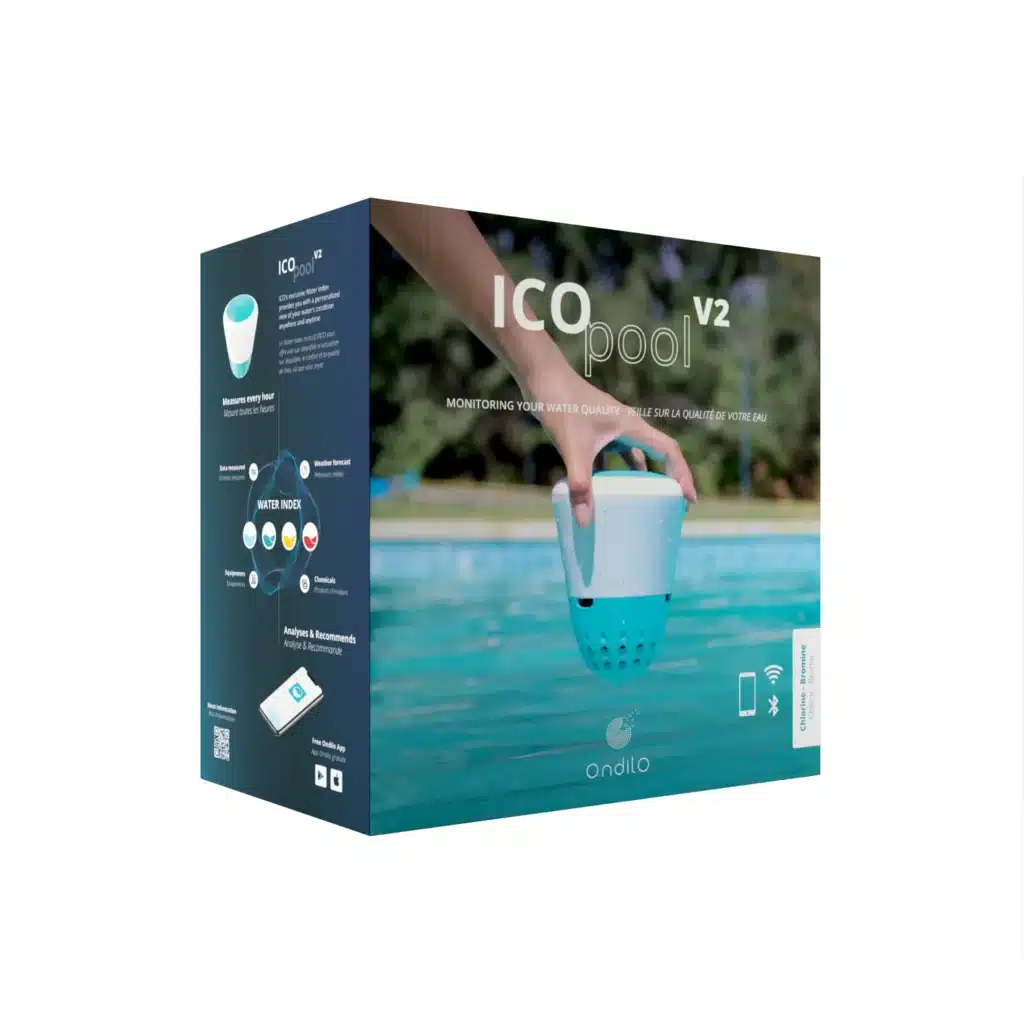Maintaining water balance in a swimming pool is essential to ensure that the water is clear, healthy and enjoyable. This balance is based on three fundamental parameters: pH, alkalinity (TAC) and hardness (TH). Well-balanced water extends the lifespan of your equipment, optimises the effectiveness of treatment products and offers impeccable bathing quality.

The environment and the use of your pool have a direct impact on the quality of the water :
Unbalanced swimming pool water should never be neglected: it's essential to intervene quickly to preserve bathing quality, the durability of equipment and the effectiveness of treatments.
In terms of comfort, water with unstable parameters can become irritating to the skin, eyes and mucous membranes. This can lead to redness, itching and general discomfort.
From a technical point of view, unbalanced water loses its ability to stabilise treatment products. As a result, you need to use more chlorine, pH regulators, anti-algae or anti-scale products, which increases maintenance costs and makes day-to-day management more complex.
This chemical imbalance also has direct effects on your installation: it accelerates wear and tear on coatings, weakens seals and damages equipment (pump, filter, exchanger, etc.). What's more, excessively hard water can lead to the formation of limescale in pipes and on surfaces, while corrosive water can attack materials. In both cases, the water becomes cloudy, encrusting or aggressive.
Here are some indicators to analyse to understand water quality :
Idéalement, l’eau de votre piscine doit avoir un pH compris entre 7 et 7,4 ( pour un traitement au brome le pH doit être compris entre 7,4 et 7,6) . Il s’agit des valeurs optimales pour la désinfection de l’eau.
Le TAC permet de connaitre la concentration en ions carbonates et bicarbonates. Cette mesure indique la capacité de l’eau à absorber les fluctuations du pH et à le stabiliser. L’unité de mesure du TAC est la ppm (partie par million) ou le degré français (°f) et elle doit varier de manière optimale entre 80 et 150 mg/l . En régulant le taux de TAC de votre eau (TAC+ ou TAC-) vous pourrez faire ce que l’on appelle « un tamponnage de votre eau ».
Le TH correspond à la dureté de l’eau, qui désigne la concentration en ions calcium ou magnésium . Il se mesure en degré français (°f) ou en ppm. Le TH idéal se situe entre 10 et 20°f . Plus le TH est élevé, plus l’eau devient dure et calcaire. A contrario, plus il est faible, plus l’eau est douce.
Tout savoir sur la dureté de l’eau.
L’ORP permet de contrôler la qualité de désinfection de l’eau. Plus la concentration en ORP est importante, plus l’eau est en capacité d’éliminer les micro-organismes dangereux. Pour une désinfection optimale de l’eau à 25°C, les standards internationaux préconisent des mesures de l’ORP comprises entre 650 et 750mV.
Finally, water temperature is a very important parameter to control. Water that's too hot impairs the action of chemicals, and encourages the production of bacteria and algae.
The Taylor scale is a reference tool in the world of swimming pools for quickly assessing the calcium-carbonate balance of water. The Taylor scale can be used to determine whether the water is :
The balance is based on the interaction of four essential parameters: pH, TAC, TH and water temperature. Using these data, it is possible to position the water in one of the three states mentioned above. The aim is to achieve balanced water that is neither corrosive nor scaling, guaranteeing longer equipment life and optimum chemical stability.
📌 Good to know: you can use a paper Taylor balance (printed pivot table), specialist software or mobile applications to take this reading quickly after your analyses. The Taylor scale takes the form of a diagram. Ideally, you should be able to draw a straight line between the TAC, pH and TH. Please note: it is only valid if the water temperature is 24°C.
The Langelier Saturation Index (LSI) is a calculation method used to determine whether the water in your pool is chemically balanced, corrosive or scaly.
The calculation is based on the formula: LSI=pH(measured)-pHs(theoretical)
The pHs is a reference value calculated from a number of parameters: water temperature, TAC, TH and dissolved solids (TDS).
Interpreting the index :
This calculation is particularly useful for anticipating the appearance of problems linked to mineral imbalance in the water, such as premature wear and tear on installations or cloudy water that is difficult to treat.
📌Automatic Langelier index calculators are available online or integrated into certain electronic pool analysis kits.
To guarantee perfectly balanced water throughout the season, it's essential to monitor these parameters regularly using a suitable tester (test strips, electronic testers, colourimetric kits, connected water analysers, etc.).
The frequency of pH, TAC and TH analyses should be adapted to external factors, and your pool water should be monitored weekly during the summer season, or even daily in very hot weather or after storms or heavy rain.
If the slightest anomaly is detected - whether it's a pH that's too low, an unstable TAC or a TH that's too high - you need to take immediate action using the appropriate corrective products: pH+, pH-, alkalinity booster, hardness stabiliser, etc.
Automatic measurements 24/7
Personalized treatment recommendations.

At the same time, regular and rigorous treatment of the water is essential, particularly during busy periods. Disinfection (chlorine, bromine, active oxygen, etc.) must be adapted to the water temperature, the number of bathers and the exposure of the pool
A regular care of your pool in addition with a regular filtration are essential to water quality and preservation of your equipment. Your tips to clean well your pool.
For crystal-clear water and maximum bathing pleasure, water balance must never be neglected!
In short: testing, treating and filtering your water, and cleaning regularly, is the key to clear, healthy, enjoyable water all season long!